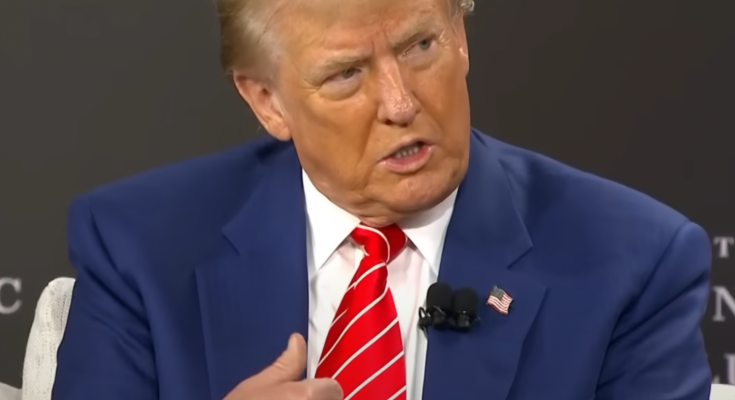Donald Trump ‘To Expel All Transgender People From Military’
President-elect Donald Trump is reportedly planning to issue an order on his first day in office to ban transgender individuals from serving in the military.
This controversial measure could lead to the “medical discharge” of approximately 15,000 active-duty service members, effectively labeling them unfit for military service, according to The Times.
The proposed executive action, set for January 20, 2025, would also prohibit transgender individuals from enlisting, as all branches of the armed forces grapple with recruitment challenges.
Trump, now 78, has tapped former Fox News host Pete Hegseth as his nominee to lead the Department of Defense.
Hegseth has promised to eliminate what he refers to as “woke” policies across government agencies.
In a recent podcast interview, Hegseth described the inclusion of transgender people in the military as “pushing boundaries,” arguing, “You can’t integrate trans people as easily as people of different races because being transgender in the military causes complications and differences.”
Hegseth also claimed transgender service members are “not deployable” due to their reliance on medical treatments.
This is not the first time Trump has targeted transgender individuals in the military. In 2017, during his presidency, Trump announced via Twitter that transgender individuals would no longer be allowed to serve. At the time, the White House stated that retaining personnel with a history of “gender dysphoria,” which could necessitate significant medical care, posed “considerable risk to military effectiveness and lethality.” Trump justified the move, asserting that the military “cannot be burdened with the tremendous medical costs and disruption that transgender in the military would entail.”
The Obama administration had previously allowed transgender individuals to serve openly in the military, a shift that led to efforts to highlight the contributions of transgender troops. For example, Major Jason Vero, a transgender Air Force pilot and director of the Joint Base Andrews Air Show, shared his journey of transitioning after a challenging period in 2017. “I felt lost in the ocean with my head barely above water,” Vero said. “After speaking with my pastor, I made the decision to transition.”
Similarly, Major Rachel Jones, chief of the U.S. Army Sustainment Command Cyber Division, credited her ability to serve authentically as a transgender woman with saving her life. “I was convinced I was inherently evil for being transgender,” Jones said. “The pressure of hiding all the time was so bad I grew up depressed and suicidal.”
Since 2020, the Pentagon has reportedly spent more than $26 million on healthcare for transgender service members, including $17.5 million for psychotherapy, $1.5 million on hormone therapy, and $7.6 million on gender-affirming surgeries. These procedures range from facial reconstruction to mastectomies and, in rare cases, surgeries such as vaginectomies and scrotoplasties.
The U.S. Military Health System spends about $50 billion annually to provide care to nearly 9.6 million active-duty members, retirees, and their families under TRICARE health plans. While TRICARE typically does not cover gender-affirming surgeries, active-duty members can request waivers for procedures deemed medically necessary.
As of April 2024, 3,700 active-duty military personnel had been diagnosed and treated for gender dysphoria, representing about 0.3% of all military personnel—a figure lower than the estimated 0.6% of transgender individuals in the broader U.S. population. The number has risen from 1,892 in 2020, reflecting increased societal acceptance of transgender individuals.
Among the treatments provided, facial reconstruction surgeries aimed at enhancing masculine or feminine features were the most common. Other procedures included mastectomies and rare surgeries such as clitoroplasties and scrotoplasties. Additionally, three service members underwent voice training in 2022 to help align their communication style with their gender identity.
The debate over transgender military service remains a contentious issue, intertwining questions of medical costs, military readiness, and the broader societal acceptance of gender diversity.




